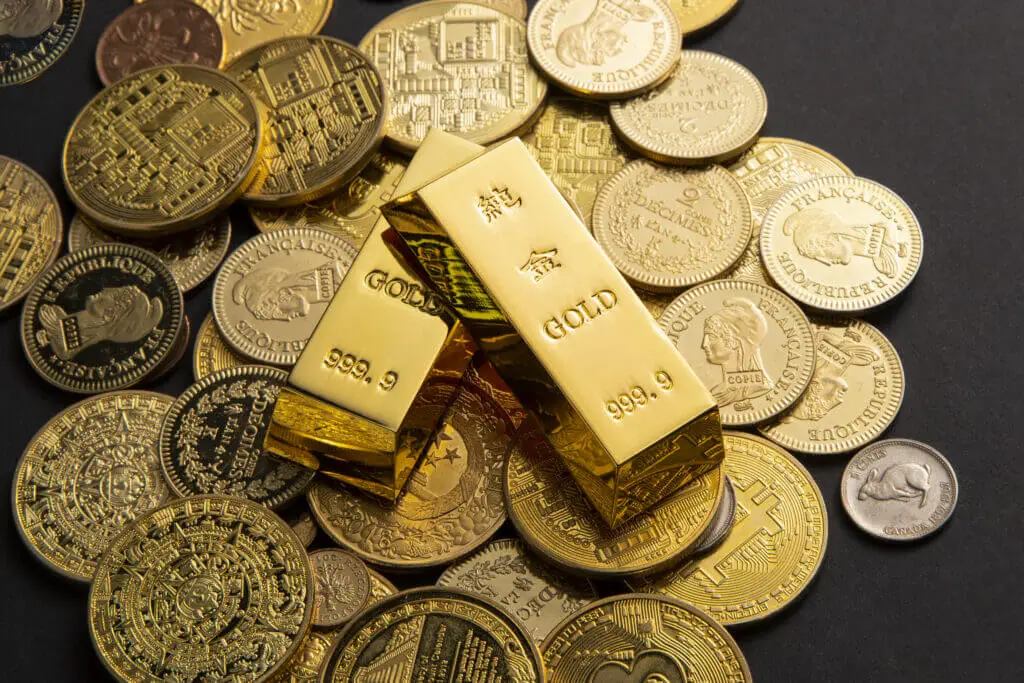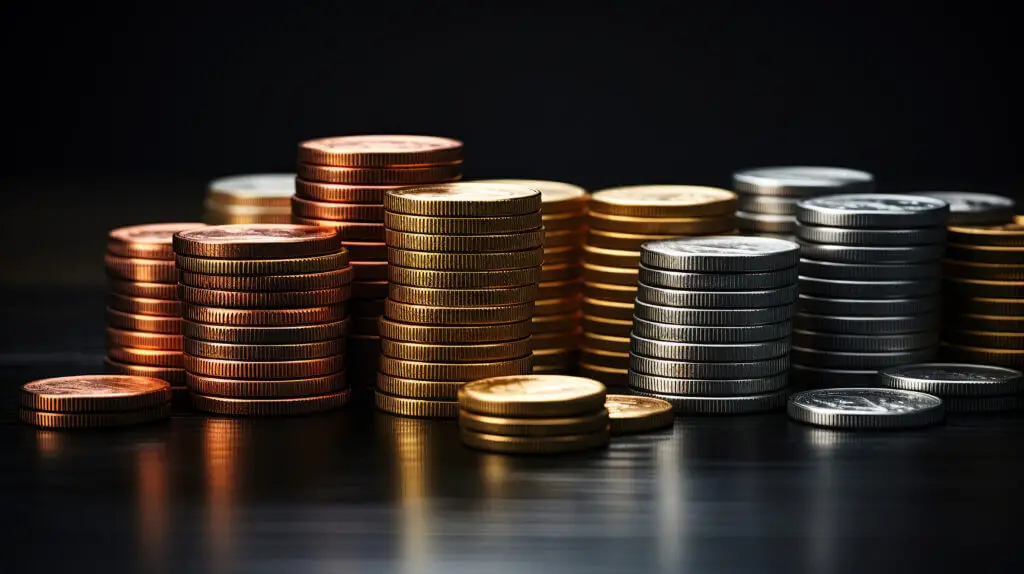Few investments carry quite as much glamour and history as gold and silver. For centuries, both have been employed as various forms of currency, stores of value, and even symbols of one’s wealth. But which is the better long-term bet? Let’s look at the pros and cons of investing in both gold and silver, considering historical performance, market dynamics, and practical considerations.
IF YOU ARE INTERSTED IN SUCH TYPE OF CONTENT YOU MAY VISIT OUR WEBSITE
Table of Contents
The Case for Gold
Historical Performance and Stability
The question is “ gold or silver: Which is a better long-term bet?“, lets discuss. Traditional thought considers gold as the ultimate safe-haven asset. Investors head for cover in gold as a mode of storing wealth when the economy is in turmoil, uncertainty prevails, and erosion of purchasing power takes place. Interestingly, this has been followed through the centuries—from the most ancient of civilizations to even modern economies. During inflationary, deflationary, and geopolitically uncertain times, the price of gold has been resilient.
Historically speaking, gold has generally been a dependably sound, if unspectacular, gainer. Over longer periods, this has appreciated in price at a rate of some 10% per year on average. For perspective, gold went from roughly $270 per ounce at the beginning of 2001 to approximately $1,800 at the end of 2020—a phenomenal return. It is worth mentioning that, in the short term, gold could be rather erratically unstable while generally tending upwards.
Hedge Against Inflation and Currency Devaluation
Traditionally, one of the big reasons people have invested in the yellow metal is that over a long period, it has acted as a hedge against both inflation and currency devaluation. Paper currencies lose their value in the things they are able to buy when there is high inflation. Long-term and more often than not, the price of gold has remained steady, if not appreciated, during such instances of inflation. For example, gold prices significantly surged from US$35 per ounce in 1971 to over US$600 by 1980 due to the highly inflationary period in the U.S. during the 1970s.Central banks in countries all over the world have printed astronomical volumes of new money over recent years in the interests of wage stimulations, especially after the financial crisis of 2008 and the COVID-19 pandemic. Actually, such a rise in money supply does heighten concerns for future inflation and currency debasement, thus making gold a good long-term bet in preserving wealth.
Central Bank Demand and Market Liquidity
Another supportive factor for long-term prospects is central bank demand. Central banks from most countries, more so emerging markets, have tried to shore up their gold reserves as a way of diversifying from the U.S. dollar. This has made a steady source of demand created for gold, hence underpinning its value.
Gold is also among the world’s most liquid assets. Whether in New York, London, or Tokyo, you can buy or sell gold at any time, offering flexibility and security for an investor.
Limited Supply and High Demand
Adding to its rarity is the fact that gold becomes increasingly appealing. Unlike fiat currencies, whose printing can be carried out in a very carefree manner, the supply of gold is highly limited. Mining production adds only around 1.6% to the total global supply each year. With demand usually outstripping supply, this scarcity undergirds higher prices over time.

The Case for Silver
Industrial Demand and Versatility
Where gold is a store of value, silver is both an industrial metal and a precious metal. That is what makes silver a singular investment opportunity. Much of the demand for silver emanates from industrial uses, ranging from electrical components and solar panels to batteries, not to mention medical devices. As technologies continue to evolve and humankind seeks to move into renewable energy, so too should the demand for silver rise.
The leading driver in the demand for silver emanates from growing solar energy use. In photovoltaic cells, used in solar panels, there is a need for silver. The Silver Institute estimated that in 2021, the solar sector would consume about 105 million ounces of silver, a figure that will keep rising given the green energy policy in use in most countries.
Higher Volatility and Greater Potential for Higher Returns
Silver is usually more volatile than gold, which may cut both ways. Inasmuch as the volatility can lead to big, short-term price swings, this also presents opportunities for higher returns. This can be seen in the changes in the gold-to-silver ratio in the past century, pretty wide and giving a good opportunity to investors to reap benefits by playing changes in this ratio.
For example, the price of silver fell with most other assets during the 2008 financial crisis but then soared in the following years, peaking at nearly $50 per ounce in 2011. The investors who got in during the slump received quite respectable returns. This higher-high, lower-low pattern relative to gold is an attractive option for those looking to assume a bit more risk for the potential of greater reward.
Affordability and Accessibility
In that respect, silver is considerably inexpensive compared to gold and is therefore more affordable for more investors. While gold changes hands at about $1,900 per ounce as of mid-2024, silver sells at roughly $24 an ounce. This means that a given sum of capital can purchase more silver, offering investors higher leverage in terms of price movements.
Entry into silver is more attractive to starters in the field of investment in precious metals or any portfolio diversification that happens on a shoestring budget. It also means that one can purchase more frequently, which can therefore allow a dollar-cost averaging strategy that might help tone down the effect of volatility in the price.
Supply Dynamics and Mining Challenges
Like gold, the supply of silver is inelastic, but its supply dynamics are different. A good deal of the total supply of silver is mined as a by-product of mining other metals, such as copper, lead, and zinc ores. Consequently, this makes the supply of silver somewhat dependent on production levels of these base metals. Therefore, at times, it may face supply constraints that could drive up the prices of silver, whereas such would not necessarily happen with gold.
In addition, new silver mines come online less frequently than gold mines, and many of the older silver mines are experiencing reduced output, so supply is constrained. With growing industrial demand on top of the constrained supply, this might well set the stage for potential future price rises.

Which is the Better Long-Term Bet: Gold or Silver?
Whether one should be long-term investing in gold or silver is a function of his or her investment objectives, risk tolerance, and market view.
Stability vs. Growth Potential
If you are after stability and looking for a reliable hedge in case of adverse inflation or economic decline, then gold may be the better option. Its historic performance, the demand by central banks, and its reputation as a safe-haven asset make it apt for wealth preservation.
On the other hand, if you are looking for growth potential and can go through the higher volatility, the upside in silver is good. Its dual role of being an industrial and a precious metal, with its relatively inexpensive price, makes it an interesting choice if one wishes to play on the advantage of the emergent technologies and industrials.
Diversification
The best approach for most investors probably involves diversification between the two metals: usually, gold and silver tend to move together, but at different volatilities. Holding both gives a balance between stability and growth potential, hedging against various types of risks.
Market Timing
Market timing is a really tricky affair, but all the same, knowledge of the driving factors behind changes in both gold and silver will be an informant in your decision-making. For example, if the economy has a high level of uncertainty, then gold will relatively do well since it provides a safe haven. On the contrary, in times when there is industrial development with increased technological advancements, then gains may be stronger in silver.
Liquidity Considerations
Thus, gold tends to be more liquid than silver, as larger quantities of it can be bought and sold more easily without affecting the market price. This can be a plus if you think you may need to sell an investment quickly.
Conclusion: Gold, Silver, or Both?
Which one is better for the long term is quite irrelevant, since both gold and silver have their various strengths and weaknesses in this debate. Gold does provide stability, good historical performance, and a hedge against inflation; it is the safer bet among the two for the risk-averse investor. Silver, with industrial demand and higher volatility, may offer an opportunity for greater returns for the investor who is comfortable with greater risk.
Ultimately, it comes down to your investment approach. If one wants to make a more conservative investment that will preserve one’s wealth, then maybe gold will be the best choice. If one wants to capitalize on emerging technologies and the industrial rise, then silver is the way to go. If looking to catch both worlds, then diversification between the two might be the best option.
Remember, one investment in the realm of precious metals is only part of a diversified portfolio. When considering either an investment in gold or silver, or perhaps a little of both, keep in mind where that type of asset might fit within one’s bigger-picture financial strategy.
SOME REALATED POSTS

Art Investing for Beginners: A Powerful Guide to Start Your Collection In 2024
Introduction: As we enter 2024, we have seen that many people are interested in ART and want to pursue this interest as a career. However,

How to Make1M.com Invest in Stocks: 8+ Proven Strategies for Fast Wealth Building
Stock investment has always been one of the most valuable ways to generate excellent wealth, and platforms like Make1M.com can provide the most valuable insights

Passive Income Ideas for Students: Start Earning with Minimal Effort
It can be difficult for a student to manage college/university funds. School expenses, such as fees, book costs, and living expenses, make it impossible to

Passive Income Ideas For Young Adults: Your Path to Financial Freedom
As a young adult, you are in the best place to start thinking about building passive income. Why? You have time on your side. The

10-Smart Passive Income Ideas For Every Pocket
Due to increased expenditures today, everyone wants to improve their resources. I know you are also from the same people (hahaha). So, brothers, what are

Top Picks: Best Personal Finance Software for 2024
2024 brings an avalanche of best personal finance software programs that promise to make dealing with your finances infinitely easier and quicker. But it’s hard







